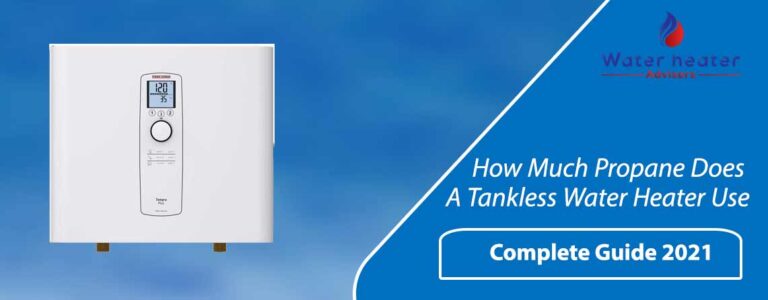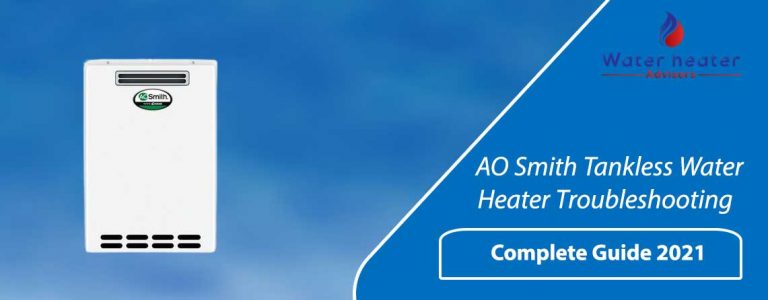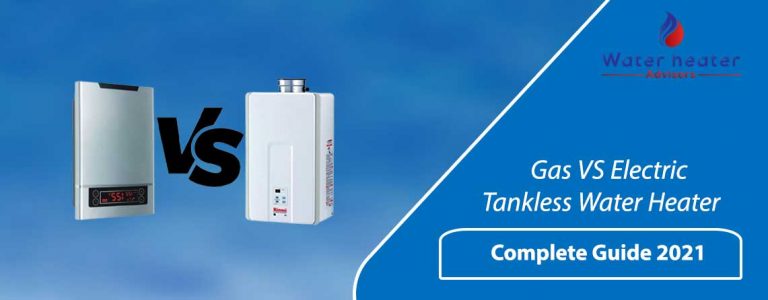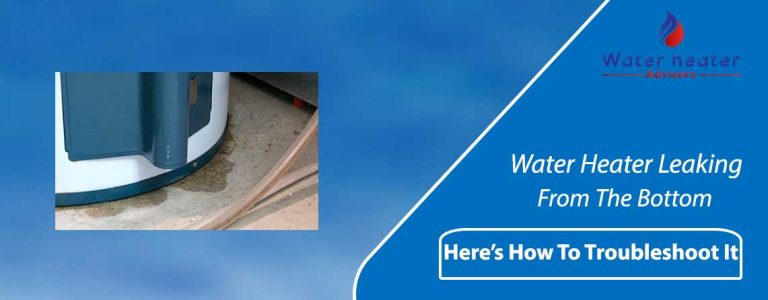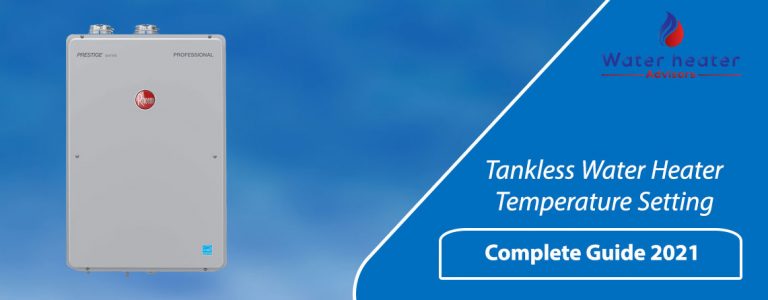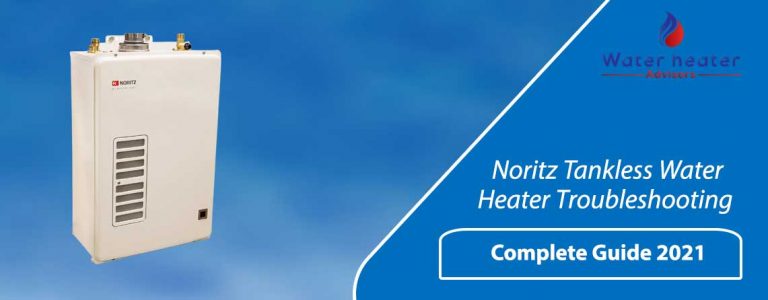An Exhaustive Guide On Water Heater Installation Code Requirements
Whether you plan to deploy the tankless water heater yourself or employ a specialist, you need to grab information about the water heater installation code requirements before doing anything.
Never assume that contractors know all water heater location codes for your locality. Wait! Why do you need to know about the water heater code violations and water heater electrical code requirements?
- How To Convert RV Water Heater To Tankless
- Installation Of Tankless Water Heater
- How Does A Tankless Water Heater Work
Before getting started, it is critical to learn about these things as they help you figure out how much the deployment will cost based on where to hang the tankless appliance.
The faraway it will be from the water, gas, or electricity source, the more the manual labor and components will cost. The venting system will also cost you a hefty amount as it is installed outside the house.
An attractive thing about these units is that you can mount them anywhere you want. However, it is still mandatory for you to acquire a specific water heater clearance to windows and other aspects.
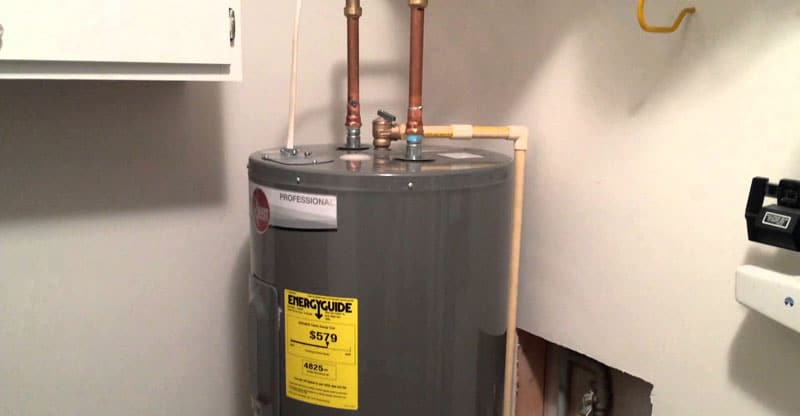
Tankless Water Heater Installation Code Requirements
Water heaters are one of the basic needs of life, and they are available in nearly every household and commercial property. They are designed to serve us by supplying on-demand hot water, but we forget how dangerous they can be.
It is critical to install and maintain them correctly because a tremendously high hazard of explosion or fire is associated with them. These explosions are powerful, so they can badly damage a garage or the entire house.
That is why a considerable number of gas water heater installation codes requirements must be satisfied when deploying or swapping the water heater. Sometimes, it becomes tough to keep up to code requirements as they vary widely from one state to another.
Code violations could lead you to stiff penalties, violate your device’s warranty, or put your family at high risk. This guide will provide you comprehensive information about water heater location requirements, violations, and much more. So, continue reading.
Is It Necessary To Acquire A Permit For Installing Or Replacing A Tankless Water Heater?
A permit is not required for tankless water heater installation, but there are greater chances that you will need a permit to replace it. Before doing anything, make sure to know about the replacement regulations of your specific town or city.
The code requirements have been modified over the years; the district or county needs to ensure that your residence satisfies the current codes for safety purposes.
In almost all conditions, changing an old unit will require either one or two permits. However, in a few cases, you may have to get a third permit too.
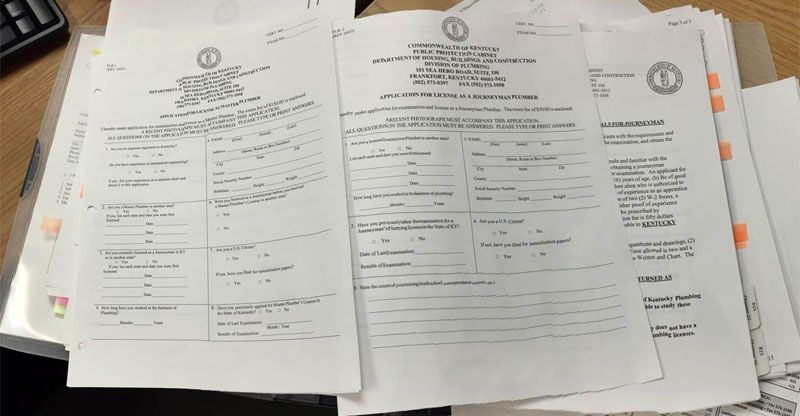
Water Heater Permit
The first permit you need is for the device itself. It is an inspection request. It is super-easy to get it by going to the local planning or building department. water heater permit comes with essential information to assist you in mounting the unit safely and according to area codes.
Once you install it, a building inspector will visit your place to examine if the heater is deployed correctly. This process could save your money and your life if the installation were performed inaccurately.
Now, you might be thinking, how much does a water heater permit cost? You will have to spend approximately $20 to $100 for getting the permit. On the other hand, when you call a plumber, he charges hundreds of dollars.
Secondary Permits
Depending on the heater’s type, some counties or cities also require either plumbing or electric permits. The standard electric appliance requires modifications to wiring and possibly the breaker box.
You may also have to grab a plumbing permit to make changes to the gas and water lines. Gas leakage could lead to a massive explosion, so an inspector will visit your house to check for any potential issues when you obtain this permit.
Extra Permits
If you have an older house, you may have to get additional licenses before installing a new unit. You will need them at the time of structural work, such as deploying a cabinet for a tankless heater.
There is no need to panic much about these licenses because many areas may already consider these factors in the plumbing or electric permits.
How To Get These Permits?
Typically, you can quickly obtain the permit for replacing the water heater. You only have to visit the local building department and pay a few bucks for the license’s price.
The majority of building departments have a flyer with all the imperative information on the water heater’s deployment or replacement.
You can also ask them as many queries as you want, and they will tell you precisely what the tankless water heater installation code requirements are.
Before starting the DIY installation or replacement process, make sure to call the department to know what is required.
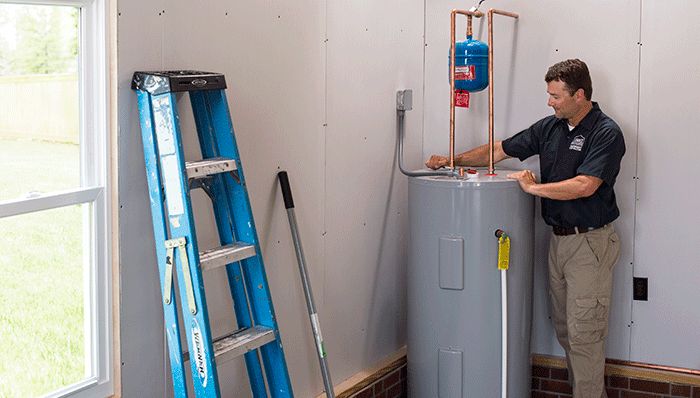
Tankless Water Heater Installation Code Requirements
It does not matter where you are positioned; you will have to satisfy several installation codes. Water heater electrical code requirements address common safety concerns.
As a resident of California, you will also have to run into additional regulations. It is better to pay some dollars and hire a professional plumber for correct installation because of code complexity.
Dedicated Water Shutoff
Deploying a dedicated shutoff permits you to turn off the water supply to your water heater, but not to the rest of the home.
It helps to maintain your unit properly and is essential during a crisis. In case you need to troubleshoot the device, you will not have to shut off the water to the entire house.
Earthquake Straps
If you live in a region prone to earthquakes, you will have to install your appliance with earthquake straps to prevent damage and ensure your safety in case of a natural disaster.
Water Pressure Regulators
It is critical to install a pressure regulating valve if your water pressure exceeds 80 PSI. Water pressure goes up when the population density grows. However, your plumbing, fixtures, and the tankless machine can be badly damaged by the high water pressure.
A premature crack can occur in the glass coating of the unit. The regulating valves reduce the pressure and prevent excessive stress on the plumbing system.
Expansion Tanks
If your plumbing system is closed means the backflow is blocked, it is recommended to deploy an expansion tank. When the device heats water, it expands and puts immense stress on the heater and other plumbing areas.
Excessive pressure will reduce your heater’s life. However, when you install an expansion tank, it provides relief from that increased pressure and safeguards your residence. You can take the water pressure PSI test to figure out if you need to install an expansion tank.
Pans And Drains
The majority of towns or counties require a drain pan’s deployment with a drain line underneath your tankless machine.
If you have mounted it in your house or basement, it is recommended and required to install the drip pan. Pans and drains lower the danger of leaks and water damage and also benefit during flushing.
Temperature And Pressure Relief Valve
Some regions require the installation of a temperature and pressure relief valve with the water heater. It is a vital safety device that releases water and lowers the pressure inside the container.
It goes off when the water temperature surpasses 210 degrees Fahrenheit or 150 PSI. Some areas permit you to pipe it to the exterior or within 6” of a garage floor for added safety.
Its advantage is that it tells you that there is something wrong with your device. However, its drawback is that you acquire extremely hot water at high pressure. So, you should keep your kids away from the heater because it could be dangerous for them to be around it.
Gas Water Heater Installation Codes
Sediment Trap
Water heater installation code requirements demand the deployment of a sediment trap. They should be placed on the gas line into the unit as close to the gas inlet as possible. They avert sediment, moisture, and debris from entering the heater’s heating chamber.
Location
If you want to install a gas or propane tankless appliance, it is mandatory to place it at an approved location. These units release carbon monoxide when they work.
More than 10,000 individuals die every year in the USA from carbon monoxide poisoning. Therefore, hang it at the suggested place to decrease the risk of CO poisoning. Some areas don’t allow heater installation in closets.
Venting
As we have mentioned above, gas heaters release carbon monoxide, which is harmful to humans. So, it is crucial to install a venting system correctly. It will stop CO from entering your house and nearby areas.
They must be constructed of durable and suitable materials and seated outside. They should also be kept clear from combustible substances.
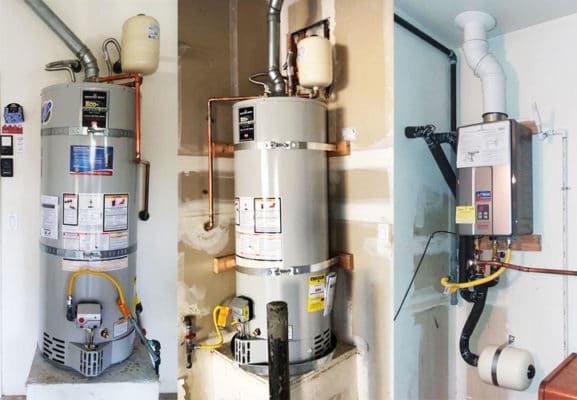
Water Heater Electrical Code Requirements
Bottom Board
Electric tankless heaters must be insulated when mounted in an unheated location to prevent heat loss from the heater’s bottom. It would be best if you hung them on an incompressible and insulated surface.
The minimum thermal resistance of that surface should be R-10. The bottom boards are a buffer built of R-10 or superior quality thermal material that enhances your heater’s energy efficiency.
Venting Requirements For The Tankless Heaters
These water heating appliances are vented in two different ways: power and direct venting. A power vent is liable for pulling in indoor air for combustion and requires only exhaust venting. It can decrease the overall installation expenditures.
On the other hand, a direct vent attracts the air in from the outside. So, you will have to install two vent pipes. You also have the option to deploy a concentric one with the exhaust inside the intake vent.
Water heaters meant for outdoor installation don’t need a venting system. Therefore, you can easily install them because you only have to determine how close to a window you hang it. They come with countless troubles, so they are also not a perfect solution.
They rely on fans to blow exhaust from the heater horizontally, permitting the vents to end on the residence side. If your current tank vent goes from the basement to the roof, it is not recommended to utilize it. Remember, you may have to drill through the wall to do this.
The exhaust vent can be made of PVC or metal. However, your type of heater will determine which vent you should use. For example, a metal or stainless steel vent will get extremely hot and require a hefty amount to seal to the wall because you can’t take advantage of silicone to cover the gap. A concentric or condensing heater will resolve this issue. On the other hand, PVC does not heat up and costs lesser.
Venting Clearance Requirements
An externally vented unit needs 12 inches of clearance from a door or window. Besides, if the window or door does not open, the device’s clearance needs a 12 inches setback. You should not deploy them near dryer vents or intake air vents.
If you want to install it in the driveway where your children will be playing or where your family members will be walking, you need to place it over 7 feet from the floor surface.
Water Heater Code Violations
Many people perform DIY repairs and installations to save their time and money. However, the installation is done without the right planning that could put their property in violation of building codes.
Water heater code violations can create severe complications for you if you try to renovate or sell your house. Here are common code violations you should avoid at every cost.
Use Of Improper Or Illegal Materials
Using illegal or improper materials for repairs or installations could lead you to a violation of building codes. Folks utilize rubber fittings and corrugated pipes that work effectively but don’t meet the plumbing code requirements.
Therefore, invest time researching what sorts of plumbing supplies will work effectively and what will be a code violation before installing or replacing any pipe or other components.
Incorrect Size Of Drainage Pipe
Many people install incorrectly sized drainage pipes, which is a code violation. It is vital to make sure its size is within the water heater electrical code requirements.
Pressure Marking And Temperature Controls
According to installation codes, automatic temperature controls should be integrated into the water heater. These controls are anticipated to assist users to regulate temperatures to attain the ones they want.
The devices that are meant for residential uses should exhibit a clear and permanent pressure marking. It should display the maximum permissible working pressure of the appliance. Additionally, make sure it is in an accessible location so that you can obverse and inspect it quickly.
Defective GFCI Protection
This electric issue belongs to kitchens and bathrooms. When there is excessive moisture or an alteration in power current, the GFCIs automatically cut the electricity to prevent a severe problem, injury, or damage to appliances.
It is critical to deploy them in bathrooms, kitchens, and other parts of the house where water is present. You can take advantage of the affordable GFCI tester tool for examining if the outlets are up to code.
Insufficient Clearance Space Around The Toilet
There must be enough clearance space around the toilet so that you can use it easily. Clearance minimums and maximums will be different in all areas, so you should do some research before installing the toilet or changing its location.
This code is also applied to other bathroom appliances, including sinks, bathtubs, etc. While changing cabinets, make sure to use correct screws.
Inappropriate Bathroom Venting
It is wise to use an exhaust fan to get rid of the steam and smell from the bathroom. It is intended to be attached to the venting system to go to the house’s side or roof.
Regrettably, people install it incorrectly so that it ends inside, such as in the attic. Heat and moisture can get stuck in such unfinished spaces and could cause mold or humidity damage.
Erroneous Installation Of Pressure And Temperature Relief Valve
All units have a safety device known as a “pressure and temperature relief valve.” If the pressure or temperature rises high and touches a hazardous level inside the unit, the valve drains the container’s water until the allowable levels are reached.
There is a severe threat that the device could explode if the relief valve is fixed in the wrong way or detached.
Drainage Pipe Sloping
Draining pipes are dependent on gravity to move wastewater to an accurate sewage system. They should be tilted downward to keep water flowing and prevent obstructs. If they are sloped incorrectly, the substances won’t drain properly.
The sewage system can also drain them backward. The minimum slope for drainage pipe may vary from area to area, but 1/8 inch per foot is considered perfect for pipes 3 inches or larger. It is better to avoid over-sloping.
Non-Functional Water Shutoffs
Make sure the water shutoffs are functioning correctly. However, if they are not working because they are broken or damaged, then they violate water heater installation code requirements. If you want, you can perform a DIY troubleshoot or installation to make the water run.
Inaccurately Deployed Sink Traps
If you are using the wrong type of kitchen or bathroom sink traps or installed incorrectly, it can be a code violation. Don’t use S-traps because they don’t include venting, so they are outdated and always in water heater code violations.
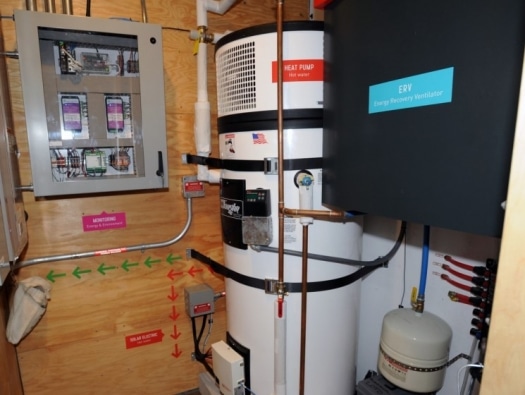
Can You Deploy The Tankless Water Heater On Your Own?
The short answer to this query is “YES.” However, you have to consider the installation codes to avoid violations. The biggest fear linked with self-installation is the violation of the heater warranty.
Secondly, you have to master different skills to mount the unit correctly. Do you have all the information and required skills to perform a DIY installation? Self-installation can cause frustration and is very dangerous as well.
A tankless machine is far more than just a water container. A variety of skills are required for correctly installing the device.
These requirements are a little less strict when changing the current appliance. However, some level of expertise is still needed. The essential skills you will need are plumbing, electrical, and carpentry.
Carpentry
You might be thinking why you need to learn this skill because you won’t be working with wood. However, you need to be acquainted with carpentry because you may have to anchor pipes to ceiling beams. In the same way, you may have to work with drywall or other areas in the basement.
Plumbing
This essential skill is required to work with both water and gas pipelines. You will have to install fixtures and confirm there are no leaks or pressure problems.
Electrical
Both gas and electric heaters have electrical components. So, you will have to hook them up to the breaker box.
Warranties
The majority of manufactures only approve a warranty claim if the device was deployed by a licensed and professional plumber or contractor. You should read these warranties before buying the unit, as it will help avoid nullifying the conditions right out of the box.
Conclusion
There are numerous variables at play, so it is difficult to tell you precisely what is obligatory and what is not. If your plumber or contractor cannot give satisfactory answers to your queries, you can consult our guide or visit the local building department.
Don’t worry, things may appear too complicated, but we are hopeful that our in-depth guide can help you determine where to mount the heater and meet the local tankless water heater installation code requirements.

